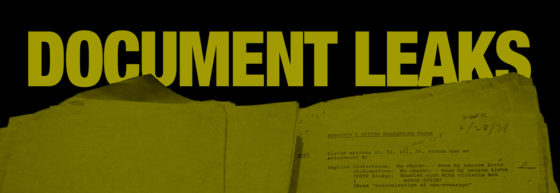“Our mission is to provide the highest quality scientific information and analysis to enable a healthy food system and a healthy world”
The Bioscience Resource Project provides scientific and intellectual resources for a healthy future. It publishes Independent Science News, a media service devoted to food and agriculture, and their impacts on health and the environment. It also offers resources for scientists and educators and internships and training for students. Through its innovative scientific journalism and original biosafety review articles, the project provides unique and revealing perspectives on issues that are fundamental to the survival of people and the planet. The project does not accept advertising or corporate funding and is a non-profit 501(c)3 organization. It is completely dependent on individual donations.We invite you to join the Project as a contributor or a donor.
Bioscience Resource Project News and Views
The Biosecurity Myth That Is Destroying Small Farming by Lucile Leclair.
Synopsis: Governments are deciding that small farms are not biosecure against infectious diseases. Despite plentiful evidence that small farms are in fact more safe and more biosecure than factory farms, governments are enacting rules and regulations that are near impossible for small farms with animals outdoors to meet, either cost-effectively or at all. The result is destroying rural and traditional ways of life. Read the full article written by Lucile Leclair at: https://www.independentsciencenews.org/health/the-biosecurity-myth/
Rethinking Food and Agriculture: New Ways Forward
Bioscience Resource Project scientists, Jonathan Latham, PhD and Allison Wilson, PhD, are authors of two of the chapters in the just published book Rethinking Food and Agriculture: New Ways Forward . The book was published by Elsevier on October 21st, 2020. The editors are Amir Kassam and Laila Kassam.
To learn more about the specific chapters written by BSR scientists you can go to:
The Myth of a Food Crisis by Jonathan Latham
Will Gene-Edited and other GM Crops Fail Sustainable Food Systems?
by Allison K Wilson
More information about the book, including the chapter titles and their authors, as well as an introduction to the concept of inclusive responsibility, a theme developed in the book, can be found at: https://inclusiveresponsibility.earth/
Why We Need a Small Farm Future
Synopsis: What would a truly resilient society look like? This article is an excerpt from the new book A Small Farm Future: Making the Case For A Society Built Around Local Economies Self Provisioning Agricultural Diversity and A Shared Earth. The book examines the question of resilience from the points of view of politics, economics, and the physical world, and it challenges both conventional wisdom and standard utopian visions to elaborate on the opportunities and the problems inherent in realising this goal. As Vandana Shiva notes on the cover “Either we have a small farm future, or we face collapse”.
The author is a farmer and former academic and the book is published by Chelsea Green Publishing. Read the full excerpt at: https://www.independentsciencenews.org/commentaries/why-we-need-a-small-farm-future/
Bill Gates’ Global Agenda and How We Can Resist His War on Life
Synopsis: “The coronavirus pandemic and lockdown have revealed even more clearly how we are being reduced to objects to be controlled, with our bodies and minds as the new colonies to be invaded. Empires create colonies, colonies enclose the commons of the indigenous living communities and turn them into sources of raw material to be extracted for profits. This linear, extractive logic is unable to see the intimate relations that sustain life in the natural world. It is blind to diversity, cycles of renewal, values of giving and sharing, and the power and potential of self-organising and mutuality. It is blind to the waste it creates and to the violence it unleashes. The extended coronavirus lockdown has been a lab experiment for a future without humanity.”
Genome Editing Pioneer Violated Biosafety Rules
Published Thursday Sept. 17th by Independent Science News: Genome Editing Pioneer Violated Biosafety Rules, written by Ed Hammond of Prickly Research.
The Failure of GMO Cotton In India
Synopsis: By nearly all measures, hybrid Bt cotton in India is a failure. Indian yields are low and less than that of many countries which shun hybrid and GMO cotton. In 2017, 31 countries were ranked above India in terms of cotton yield. Meanwhile, despite initial decreases after adoption, applied insecticide use is now above what it was when GMO Bt cotton was introduced. Combined with the high cost of Bt hybrid cotton seed it is easy to explain the extreme economic distress of Indian farmers.
Read the full article at: https://www.independentsciencenews.org/commentaries/the-failure-of-gmo-cotton-in-india/
